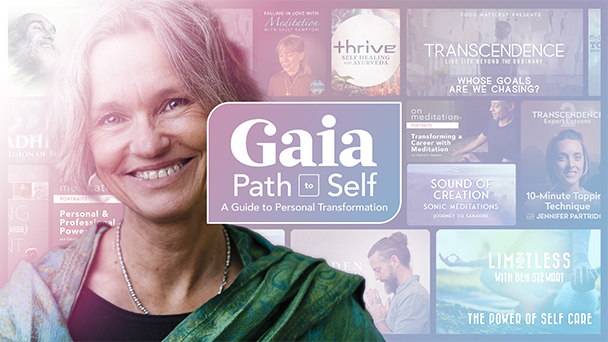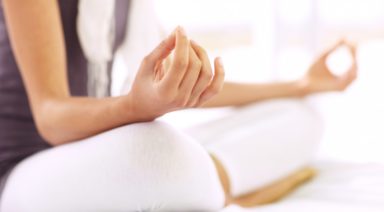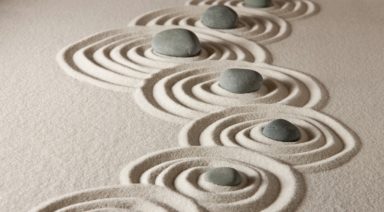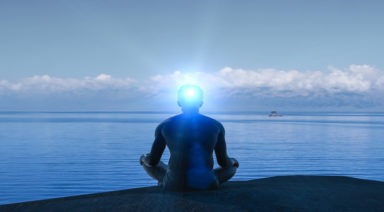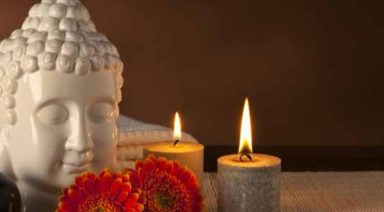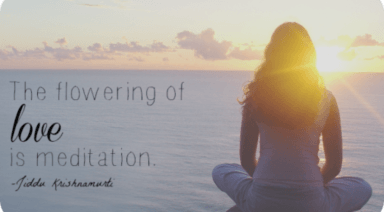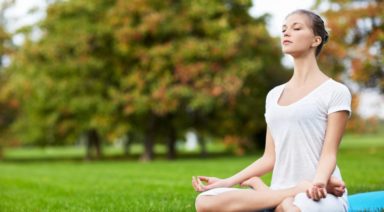Meditation and Mindfulness; Methods for Lasting Peace
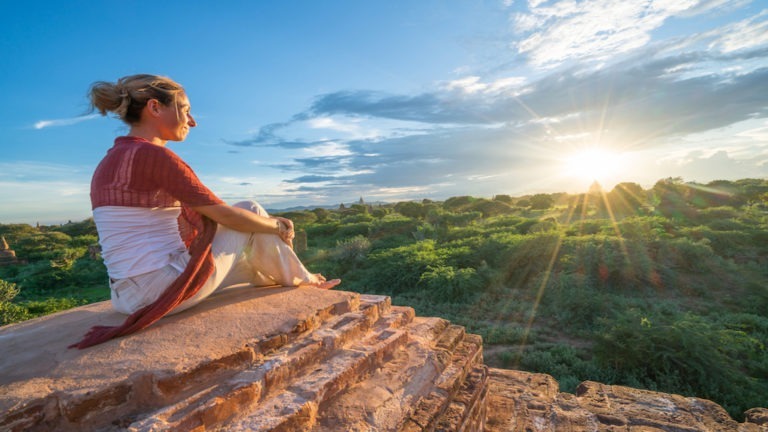
Mindfulness is an essential and useful pathway that leads to peacefulness. It isn’t rocket science, it doesn’t require a trendy workshop, and it doesn’t require that you live in an ashram.
“Each place is the right place. The place where I now am can be a sacred space.”
– Ravi Ravindra
What is Mindfulness?
The most basic definition of mindfulness might be the act of paying attention to the things that you are experiencing, and then choosing peacefulness in relation to every action, person, thought, feeling, and response.
Mindfulness in its purest form has the following characteristics:
- Being fully present to what’s happening in this moment
- Leaving the past in the past
- Letting fantasies of the future dissolve
- Refraining from self-judgment and judging others
- Keeping emotions in-check
- Responding instead of reacting
- Strengthening our connection to our core selves
While mindfulness might not require you to be warm-fuzzy, spiritually-focused, or heart-centered, it does require a measure of awareness about what you are presenting to others and how you are being received.
The positive net-result of mindfulness might be that the people you engage feel non-threatened, accepted, heard, and relaxed upon interacting with you. Meanwhile, you would most likely be unaffected by interactions with others, remaining fully aware of yourself throughout each experience.
Some say that kindness and love are vital to the experience of being mindful. I don’t agree with this sentiment. Many people are broken, lost, lonely, hurt, and disconnected from their heart. That’s their business.
Even in their states of broken-ness, I believe these types of people can still create a connection to their clarity, and remain aware of how they are affecting others. It’s in this way that almost anyone can represent mindfulness, even if only for a few moments.
What is Meditation?
Meditation is an ancient practice that helps people go beyond their personalities and deeper within themselves so that they can experience a more profound and connected sense of their true Self and their realities.
While many forms and teachers have emerged since its inception, meditation hasn’t changed very much and continues to hold the fascination and respect of a long list of spiritual leaders, traditions, and religions.
Medication techniques can include something as simple as focusing on a flower and welcoming the beauty of that flower into our hearts. It might also involve training the mind and heart to be receptive to the present moment so that our awareness can expand.
The primary goal of meditation is to inspire the superfecta of peacefulness: spiritual connectedness, mental clarity, emotional tranquility, and physical relaxation.
Meditation can occur in any location, and at any time, although early mornings offer the most meditative atmospheres. During early mornings, our bodies are in restful states of self-nurturance This is also when all of the usual societal energies are dormant. Many monks arise at 3 am and meditate until 6 am.
The Difference Between Mindfulness and Meditation
Meditation is mindful by nature, although it might be said that meditation takes us beyond our minds and therefore helps us become more expanded when compared to basic mindfulness.
It might be said that mindfulness is a form of meditation, but the practice of mindfulness might not always be meditative. You might be present to this moment in all its glory, but you might not achieve a meditative state or move beyond the mind.
It might be that mindfulness brings us into the present moment so resolutely that we are present to the activities and behaviors of our minds. Meanwhile, meditation helps us go above, surpass, or supersede our mental processes.
“Concentration is a cornerstone of mindfulness practice. Your mindfulness will only be as robust as the capacity of your mind to be calm and stable. Without calmness, the mirror of mindfulness will have an agitated and choppy surface and will not be able to reflect things with any accuracy.”
– Jon Kabat-Zinn
Mindfulness Meditation
Mindfulness meditation is one of the least complex forms of meditation. The premise goes something like this: choose to peacefully focus on your actions, emotions, and thoughts as you experience them, without thinking of the past or future, and without any preconception, precondition, or judgment.
If you are walking in the park, feel your feet and breath, embrace the trees and flowers, be present to your surroundings and everything that you see, feel, and hear.
If you are speaking with another person, be fully present to every thought that comes to mind, distilling and then disregarding all of your emotions, opinions, judgments, and other mental fodder. Be present to and present with your actions, live within your words, and forge a pathway to your core Self.
One form of mindfulness meditation consists of focusing on an object or idea. This might involve mental imagery, relaxing a part of your body, calming your mind, or gently concentrating on the breath.
When doing mindfulness meditation, be present to your thoughts, words, and responses. Ignore all extraneous distractions and fodder. Enter this peaceful space often, and remain in it for as long as you can.
If you’re interested in learning more about the topic, you might consider searching for mindfulness training in your area.
Useful Meditation Techniques
There are many helpful meditation techniques. You might select a method within a specific tradition like Hinduism or Buddhism, or you might choose to meditate on the image of your deity.
Among many others, you might consider Kundalini, Zen, or Transcendental Meditation. Millions of people throughout the world utilize these forms of meditation to invite peacefulness, open their hearts, and expand their awareness.
Dr. Vasant Lad, one of the most remarkable innovators and leaders in Ayurvedic medicine, and Director of the Ayurvedic Institute in Albuquerque, NM once said to me, “To become the rose, you must meditate on the rose. That which you meditate on, you become.” I love this quote because it speaks to the core nature of meditation.
Through meditation, we can change our realities. By focusing on the most peaceful sounds, imagery, and aspects within creation, we begin to mirror them. Over time, we can embody the peace found in the loveliest flower and the most gentle wind.
Breath Meditation
- Find a quiet place and consider lighting a candle. Sit in a comfortable position, either on a meditation pillow (on the floor) or on a couch or chair. Be sure to have back support so that you are not tempted to slouch.
- Chant the sound “OM” three times.
- Close your eyes and take three deep breaths, inhaling and exhaling freely and deeply.
- Imagine that your breath is the key to your peacefulness. Imagine it to be a gentle river that can bring light and love into your body.
- For the next five to ten minutes, try to focus solely on your breath. Let go of mental imagery, the past, the future, stressors, and any interruptions emerging from your immediate environment. Be grateful throughout the experience.
- Focus on your incoming breath and enjoy it.
- Focus on your outgoing breath and enjoy it.
- In your mind’s eye, imagine each breath enter your body and exit your body. You might imagine that your breath is akin to white light, or you might want to assign another color to it.
- As your breath moves into and throughout your body, imagine that your breath is nurturing every organ.
- When you exhale, imagine that you are releasing stress and toxins.
- When you complete your five to ten minutes of focusing and breathing in this way, conclude your experience by chanting, “Om Shanti Shanti Shanti Om.”
Open your eyes and thank your heart and lungs for being full of life. Take a few moments to gather your energy and thoughts.
Throughout the day, consider the peacefulness you found during this meditation. Try to repeat this process tomorrow and continue from there.
“By concentrating on a form, sound or light, we learn to constantly be in that state of inner aloneness and to be joyful in any situation.”
— Amma
How Do I Begin?
If you can start by meditating for 2 minutes a day, you’ll be off to a great start. See if you can increase the number of minutes every day. Over time, you’ll establish a healthy habit of rising early and beginning the day with lovely clarity of mind.
You might also consider reciting Sanskrit mantras. A mantra helps us detach from our monkey-minds and focus on the highest vibrations.
If meditation and mantras are challenging, explore being in the present moment through mindfulness. Being mindful inspires peacefulness, clarity, and relaxation.
As a result of being mindful, you might experience improvements in your relationships, work dynamics, and physical health.
Join the Internal Selfie Revolution

Have you joined the selfie revolution? Since Robert Cornelius took the first selfie in 1839, humans have been fascinated, if not obsessed, with snapping images of themselves. People now take selfies for many reasons, such as telling a story and capturing memories.
Did you know that people have been taking internal selfies since time immemorial, well at least several thousand BCE? It’s called meditation! It’s nothing mysterious or fancy. All you have to do is turn your camera inward and snap a picture of your current state of mind: What do you see?
Some early forms of meditative introspection included ritual dance, reciting mantra, and sitting crossed-legged under a Bodhi tree. Today, the meditation movement has captured the world’s attention. We are learning to turn our minds inward everywhere from the gym, yoga and tai chi class, the office and at our desks, in the classroom, and the boardroom.
Ready to begin your own mindfulness journey? It’s easy. Get your camera and join the Internal Selfie Revolution! Here’s how to start your practice today.
The Psychology of the Selfie
Why do we retake our image multiple times in order to get it just right before hitting send? On a superficial level, a selfie is casual, easy way to communicate a snapshot of yourself in-the-moment. It may be used as verification or to document change. However, a selfie also give us valuable information. From a selfie we can assess our:
- Appearance
- Thoughts
- Emotions
- Feelings
How to Take an Internal Selfie: The Basics
Now try turning your camera inside. Take a peek into your own brain. Let your Internal Selfie develop into an image or sensation – it might have a distinct shape, specific texture, or even a splash of color. Examine your internal snapshot as it manifests: try not to judge, reject, embrace or explain it. Just look at it directly and be curious!

